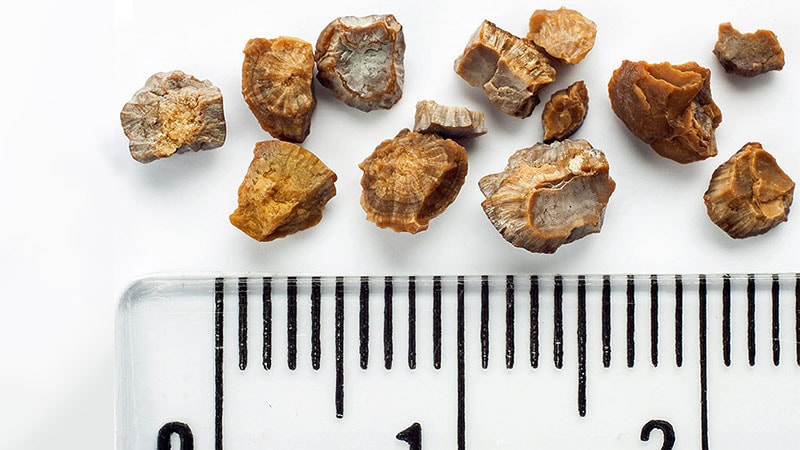An experimental handheld ultrasonic device used in an office setting was shown to guide residual kidney stone fragments out of the body and markedly reduce the risk for relapse, researchers reported (Abstract MP29-10) on May 4 at the 2024 annual meeting of the American Urological Association in San Antonio, Texas.
Mathew Sorensen, MD, MS, an associate professor of urology at the University of Washington, Seattle, and director of the Comprehensive Metabolic Stone Clinic at the Puget Sound VA, said that the risk for relapse of kidney stones was 70% lower in the treatment group than in the control group.
“This is an ultrasound-based propulsion procedure that is not like anything else that has ever existed. There’s nothing else that’s like it,” Sorensen said. “Essentially, in a session in the office with no anesthesia, we can use ultrasound energy to focus on those fragments and try to push them out of the unfavorable areas of the kidney.”
Roughly 20%-30% of patients who undergo surgery to remove kidney stones have residual fragments that can ultimately cause pain and send them to the emergency department or into hospital admission for treatment.
In the new study, 82 patients with stone fragments ≤ 5 mm were randomly assigned to receive the ultrasound treatment — which Sorensen and his colleagues developed over the past decade — or no procedure.
During a median follow-up of 2.6 years, 20% of patients in the treatment group experienced relapse of stones compared with 50% of patients in the control group.
Relapse was measured as the future occurrence of urgent medical visits for stone-related symptoms, surgeries, or growth of the residual fragments as measured on annual CT.
Sorensen and his colleagues found asymptomatic passage of fragments was twelvefold higher in the treatment group in the first 3 weeks (60% vs 5%). Asymptomatic passage was similar in both groups after 3 weeks.
Sorensen said that mild discomfort after the procedure was common, occurring in 38% of patients who underwent the treatment, but that it was short-lived and resolved without intervention; 8% of the treatment group and 7% of the control group had blood in the urine.
The propulsion device is available at two test sites in the University of Washington system; the manufacturer, SonoMotion Inc, a spinoff from the institution, is seeking US Food and Drug Administration approval for the technology, Sorensen said.
David Schulsinger, MD, an associate professor in the Department of Urology at Stony Brook University Hospital in New York, said that patients with stone fragments currently have two options: follow-up surgery or active surveillance.
“With this new device, we actually have the potential for doing one other thing, and that is treating these patients noninvasively and without anesthesia,” Schulsinger said. “Once it’s ready for prime time, I think [ultrasonic propulsion] will be very well accepted among urologists to manage patients with asymptomatic residual stones.”
Sorensen is an advisor and equity holder in SonoMotion Inc. Schulsinger reported no relevant financial conflicts of interest.
Howard Wolinsky is a Chicago-based medical writer and a kidney stone patient.
